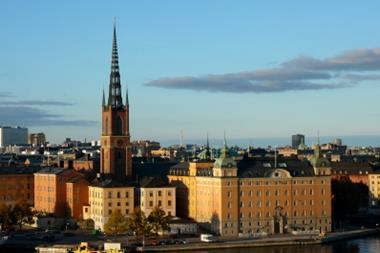Swedish pension fund AMF has reported an increase in its total return for the first nine months to 8% from 5.9% in the same period last year, but warned of October’s change in market mood.
AMF’s solvency level decreased to 207% by the end of September from 221% at the same point last year.
Peder Hasslev, deputy president and head of investment at AMF, said: “The nine-month period was marked by rising stock markets and falling yields.
“In October, major concerns spread about the future developments, which could come to characterise the rest of the year.”
AMF’s basic scenario was that it remained in an environment of low yields, Hasslev said.
Group profit dropped to SEK13.4bn (€1.4bn) in the first nine months of 2014, from SEK42.1bn in the same period in 2013.
This huge swing was largely due to the effect of changes in the discount rate for calculating liabilities, which AMF said reduced the 2014 result by SEK20m, having increased last year’s by SEK19.9m.
Premium income from traditional insured products fell to SEK13.5bn for January to September 2014, from SEK14.5bn in the same period last year.
Total assets under management rose to SEK488bn from SEK436bn.
In other news, Swedish life and pensions provider Folksam Liv returned 8% in the first nine months of this year at the parent company, up from 3.5% in the corresponding period last year.
Reporting financial figures for January to September, Folksam said all asset classes contributed positively to the overall return, with equities – which made up 33% of total assets – producing a particularly strong return.
Folksam’s solvency ratio was 157% at the end of September compared with 162% at the end of September 2013.
Assets under management increased to SEK339bn at the end of September from SEK304bn at the end of December 2013.
Meanwhile, local government pension scheme KPA – owned by Folksam – returned 9.2% during the first three quarters of the year, compared with 4.2% for the same period in 2013.
Premium income at KPA climbed 10% in the period to SEK9.3bn from SEK8.4bn.
Folksam attributed this rise to the fact many people had actively or by default chosen KPA as their occupational pension provider, particularly within the KAP-KL collective bargaining area, but also within PA-KFS.












No comments yet